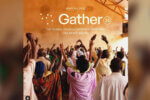Simple Steps for Shopping Success
The term “study Bible” refers to a version of the Bible supplemented by a set of features—introductions, outlines, references, notes, concordances, indices, dictionaries, maps, charts and illustrations—meant to help you read and study the biblical text.
Whether you are considering a study Bible for yourself or someone else, it is important to ask three questions: Who is the Bible for? How will the Bible be used? What is the translation preference? When you have the answers to these questions, you are prepared to purchase a study Bible.
Who Is the Bible For?
Personal study is second only to gift-giving as the primary motivation for Bible shopping. Of course, if the Bible is for you, then you probably have a good understanding of what you need. However, if you are searching for a study Bible for someone else, it may be important to consider the personal preferences of the recipient, including such details as cover types and colors.
How Will the Bible Be Used?
When searching for a study Bible, an important question to ask is whether its primary purpose will be interpretation or application. Although there is bound to be some overlap, the study notes will reflect the overall emphasis of the Bible. For example, interpretative study notes might include more cultural, historical or archaeological information, whereas application notes will point out the practical application of particular scriptural passages to a person’s life.
What Is the Translation Preference?
The most important feature of a study Bible is the translation of its text. Some of the more popular translations for study Bibles include the New International Version (NIV), the King James Version (KJV), the New King James Version (NKJV), the New Living Translation (NLT) and the New American Standard Bible (NASB).
There are two primary ways the Bible is translated: word-for-word and thought-for-thought. For word-for-word translations, biblical scholars take each word from the original Hebrew, Aramaic and Greek text and substitute an English word in its place. The KJV is an example of this type.
For thought-for-thought translations, translators look at the meaning of the original thoughts of the Bible texts and seek to convey that meaning in a way that will be understood by modern readers. A good example is the NIV.
Narrowing Your Selection
When searching for a study Bible for yourself, it is helpful to consider the theological belief system of particular versions in light of your own. One way to do so is to compare the study notes pertaining to a familiar passage of Scripture, such as John 3:16, to what you believe personally.
One of the most useful features of a study Bible for analyzing the biblical text is its reference system, and one of the most popular reference systems available is The Thompson Chain Reference Bible (Kirkbride Bible Co.), which is available in the KJV, NIV, NKJV and NASB.
It not only identifies the topic that is referenced but also keys it to a numbered topical index and directs the reader to the next verse in its chain of references.
The Rainbow Study Bible (Rainbow Studies International) is the only totally color-coded Bible in the world and one of the best-selling study Bibles on the market. Its highlighting system uses a dozen identifying colors and is available in the NIV and KJV.
The Outline Bible (Tyndale House) is a collection of outlines covering the entire Bible, including every chapter and verse. It is billed as the most comprehensive set of Bible outlines available. All the points and subpoints are arranged in a format that makes them easy to read and remember, making it an ideal resource for Sunday school teachers, pastors and other Christian educators.
Another popular resource is Nave’s Topical Bible (Zondervan), which is one of the most comprehensive Bible study helps available today. It combines some of the best features of a Bible dictionary, concordance, handbook and commentary all in one convenient place.
For those interested in study Bibles with a charismatic emphasis, popular choices include the Holy Spirit Encounter Bible (Charisma House), the Life in the Spirit Study Bible (Zondervan) and the Spirit-Filled Life Bible (Nelson Bibles).
For people who dig archaeology, there is the new Archaeological Study Bible (Zondervan), which is available exclusively in the NIV. The study Bible features nearly 500 full-color photographs of places and artifacts that explain the historical context of the people and stories of the Bible.
The best-selling NIV Study Bible (Zondervan) has been updated and revised by the original team of scholars and includes more than 800 new study notes, expanded book introductions, outlines and several other features.
Bible study software is widely available for use on personal computers and other portable computing devices, including at least one offering for the wildly popular iPod digital media player: the TNIV Bible for iPod (Zondervan), an interactive DVD-ROM product slated for release this month.
To complement its relaunch of the NKJV Study Bible, Nelson is releasing the NKJV Study Bible CD-ROM (Nelson Bibles), which will feature its entire line of NKJV products, including Nelson’s NKJV Study Bible and NKJV Concordance. It is designed for the computer user who wants an inexpensive way to access the NKJV products in a simple electronic format.
Other electronic study choices range from the software version of printed study Bibles to entire libraries of Bible helps, such as BibleWorks, QuickVerse, Online Bible, Biblesoft’s PC Study Bible and Nelson’s eBible Bible Study Library.
Whatever your study Bible needs, you have a wide variety of choices. When you’ve decided which translation is best for you and how you want to use your Bible, you’re sure to make the right selection.
Sean Fowlds is a professional writer, editor and speaker who resides in Mount Dora, Florida.






Leave a Comment
You must be logged in to post a comment.